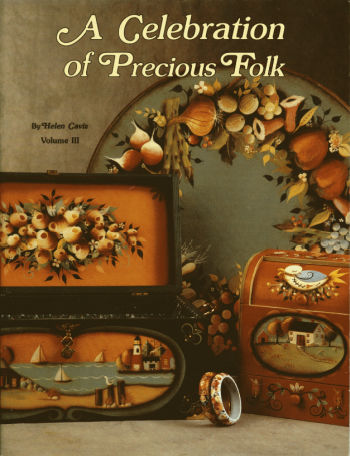Welcome to the delightful world of decorative painting for books! If you’ve ever wanted to transform your plain old tomes into stunning works of art, you’re in the right place. In this guide, I’ll share my personal journey through decorative painting, alongside practical tips, techniques, and ideas that will inspire you to unleash your creativity.
Understanding Decorative Painting for Books
Decorative painting involves applying artwork to surfaces to enhance their aesthetic appeal. When it comes to books, this might mean painting covers, spines, or even the pages themselves. This art form adds personalization and uniqueness to each book. Here’s why it’s worth considering:
The Appeal of Decorative Painting
- Personal Expression: Add your personality to your book collection.
- Creative Outlet: Explore your artistic side while transforming your books.
- Unique Gifts: Handmade painted books make thoughtful gifts.
Essential Materials for Decorative Painting
Before diving into techniques, let’s gather the right materials you’ll need for decorative painting:
Basic Supplies
| Material | Description | Recommended Brands |
|---|---|---|
| Paint | Choose water-based acrylic paints for easy application and cleanup. | Golden, Liquitex |
| Brushes | Brushes in various sizes for detailed work and larger areas. | Royal & Langnickel, Princeton |
| Sealer | Acrylic sealer to protect your artwork. | Mod Podge, Krylon |
| Canvas Panel | A flat surface for practicing your designs. | Art Alternatives, Masterson |
Optional Tools
- Stencils for patterns
- Masking tape for clean edges
- Pens for detailing
Techniques for Decorative Painting
Now that you have your materials ready, let’s explore some techniques that will elevate your decorative painting skills.

Basic Techniques
Sponge Painting
This technique involves using a sponge to dab paint on the surface, allowing for texture and depth. It’s perfect for background effects.
Brush Techniques
Different brushes can create different effects. Flat brushes are great for stripes and bold lines, while round brushes can create finer details.

Stencil Art
Using stencils can simplify complex designs, making it easy to replicate patterns on multiple books.
Step-by-Step Guide to Decorative Painting on Book Covers

Step 1: Preparation
Start by selecting the book you want to decorate. Clean the cover surface to ensure paint adheres properly. If your book has a glossy finish, consider lightly sanding it.
Step 2: Base Coat
Apply a base coat of paint. This can be a solid color or a gradient, depending on your design vision. Let it dry thoroughly.

Step 3: Design Application
Now comes the fun part! Use your chosen techniques to apply your design. Take your time; it’s okay to make mistakes. You can always paint over them!
Step 4: Seal the Artwork
Once your artwork is dry, apply a sealer to protect it from wear and tear. This not only preserves your art but also adds a nice finish.

Creative Ideas for Book Decoration
Nature-Inspired Themes
Consider painting leaves, flowers, or animals to bring a touch of the outdoors to your shelves.
Fantasy and Whimsy
Transform your books into a mystical realm with fairies, dragons, or stars. The sky’s the limit!

Personal Quotes and Artwork
If you have a favorite quote, why not paint it on your book cover? Combine typography with illustrations for a personal touch.
Pros and Cons of Decorative Painting for Books
Pros
- Unique and personalized books
- A great creative outlet
- Beautiful, eye-catching displays
Cons
- Time-consuming process
- Can be intimidating for beginners
- Poor-quality materials can ruin your work
Tips for Successful Decorative Painting
Here are some valuable tips I’ve picked up along my journey:
- Start with small projects to build confidence.
- Practice on scrap materials before moving to your books.
- Don’t rush. Let each layer dry thoroughly.
- Join online communities for crafting inspiration and support.
Frequently Asked Questions
Q1: Can I paint on any type of book cover?
A1: Yes, you can decorate any non-glossy cover. For glossy covers, you may need to sand them lightly for better paint adhesion.
Q2: What type of paint should I use for book covers?
A2: Water-based acrylic paints are recommended as they are easy to work with and have a quick drying time.
Q3: How do I remove paint mistakes?
A3: If you make a mistake, you can usually paint over it once it dries, or use a damp cloth to wipe it away while the paint is still wet.
Q4: How do I seal my painted designs?
A4: Use an acrylic sealer spray or brush-on formula to protect your design from scratches and fading.
Q5: Can decorative painting damage my books?
A5: If done carefully, decorative painting should not harm your books. Just be mindful of using non-damaging materials.
Conclusion: Embrace Your Creative Journey
Decorative painting for books can be a fulfilling and enjoyable hobby. It allows you to combine your love for literature with creativity, bringing your imagination to life. Whether you’re creating for yourself or gifting a lovingly painted book, the joy of art enhances your reading experience in meaningful ways. Start your journey today, and don’t be afraid to experiment and make mistakes along the way. Happy painting!